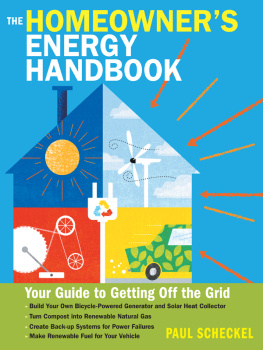Wood Gasifier
Living off the Grid: Construction of a Simplified Wood Gas Generator. Guide for beginners on how to Build your gasification system
EGBERT WILCHER
Copyright 2021 by EGBERT WILCHER All rights reserved.
This document is geared towards providing exact and reliable information in regards to the chapter and issue covered. The publication is sold with the idea that the publisher is not required to render accounting, officially permitted, or otherwise, qualified services. If advice is necessary, legal or professional, a practiced individual in the profession should be ordered.
- From a Declaration of Principles which was accepted and approved equally by a Committee of the American Bar Association and a Committee of Publishers and Associations.
In no way is it legal to reproduce, duplicate, or transmit any part of this document in either electronic means or in printed format. Recording of this publication is strictly prohibited and any storage of this document is not allowed unless with written permission from the publisher. All rights reserved.
The information provided herein is stated to be truthful and consistent, in that any liability, in terms of inattention or otherwise, by any usage or abuse of any policies, processes, or directions contained within is the solitary and utter responsibility of the recipient reader. Under no circumstances will any legal responsibility or blame be held against the publisher for any reparation, damages, or monetary loss due to the information herein, either directly or indirectly.
Respective authors own all copyrights not held by the publisher.
The information herein is offered for informational purposes solely, and is universal as so. The presentation of the information is without contract or any type of guarantee assurance.
The trademarks that are used are without any consent, and the publication of the trademark is without permission or backing by the trademark owner. All trademarks and brands within this book are for clarifying purposes only and are the owned by the owners themselves, not affiliated with this document.
Table of Contents

Introduction
Human progress necessitates the use of energy. They can't cook, illuminate their houses, or maintain their medications refrigerated if they don't have enough basic energy. Including the adoption of alternative and renewable heating use of conventional biomass fuels, renewable sources of energy can supply essential required energy for illumination and telecommunications, as well as encourage growth in the economy.
It looks to be an intriguing alternative: wood or other dried biomass is transformed into a gaseous fuel, which is then converted into electrical energy via a generating unit - a wonderful option for isolated rural regions with no power but plenty of bushes, hay, wheat and peanuts hulls, or even other biomass.
Gasification process is a very well technique that has been around for over a century. Following the rise in oil and gas prices in 2008 as well as the discussion over global warming, this innovation has been reintroduced as an energy source in rural regions.
Biomass is a flexible feedstock that can be used to generate heat, energy, gasoline, and biomaterials, among other things. It is a carbon-neutral carrier once generated or used in a responsible way, and it can contribute significantly to reducing carbon emissions.
Biomass-fueled consolidated energy, co-firing, as well as combustors seedlings presently offer additional dependable, effective, and tidy electricity and heat. The manufacturing and use of biofuels is rapidly increasing. In tropical areas, sugar cane-based biofuel has become a cost-effective bioethanol. At crude prices above US$45 per barrel, ethanol as well as elevated synfuels from woody biomass are anticipated to be viable in the foreseeable future.
Bioenergy seedlings could use contaminants from agricultural production, timber harvesting, and the timber production, and also biomass from deteriorated or trivial land areas as fuel sources. If farmland utilization effi ciency is improved, particularly those in developing territories, biomass for power generation can be managed to produce on decent quality agrarian and grassland lands without compromising the worlds largest feed and food stockpile. Biofuel production and biomass-derived merchandise earnings could be a crucial enabler for rural growth and improved crop land. Assessment methods for forest resource biomass production are in place, and they will be used to direct residual oil retrieval and power crop yields. Bio refineries would be used to improve biomass usage both for product lines and power carriers.
In certain locations, biomass combustion in wood burning stoves and industrial equipment has expanded rapidly, whereas forestry, arable, and paper scraps are used as biofuels in a variety of sectors.
More widespread biomass utilization, on the other hand, would need the development of better cogeneration, such as combustion, which link bioenergy to activities which now employ solid and vapor fuels. Glass, limestone, and brick manufacturing, as well as power production and transport, are instances of such operations.
Biomass, including coal, is a type of fuel, making it intrinsically less practical to utilize than the liquid or gaseous fuels we are used to.
The rise in oil prices since 2008 has rekindled interest in wood syngas, particularly in countries that rely on oil imports but have ample supplies of wood or other biomass fuels, or where, as in Sweden, the technology is maintained and developed as a matter of policy.
New designs that work consistently at a level of technological skill suitable for sparsely populated applications in developing nations have resulted from research into the new tech of gasification processes. In particular circumstances common in many impoverished nations, such systems are cost-effective, but the technologies in the manufacturing capabilities are not generally available, and commercial use is restricted.
The book provides a detailed overview of contemporary wood biomass gasification, including a step-by-step method and the practicalities of applying it to internal combustion generators.
Chapter 1: Getting to Know Biomass Gasification
Global energy demand is steadily increasing. With fossil fuels meeting around 88 percent of this demand. Throughout this century, energy usage is predicted to at minimum twice, if not treble.
At the very same time, atmospheric levels of greenhouse gases (GHGs) are quickly increasing, with CO2 pollution and carbon accounting for the majority of the increase. Greenhouse gas emissions should be decreased to the less than 50% of 1990 levels in order to minimize linked climate related consequences.
Furthermore, energy supply security is a worldwide concern. Many governments need to diversify their energy sources to ensure a steady and consistent supply of energy since a major amount of known traditional oil reserves are located in unstable political and economic locations.
Biomass for fuel could play a vital role in this situation. When generated in a sustainable fashion, bioenergy may significantly cut Emissions as compared to diesel fuel. Biomass fuels are accessible in most nations, or might be developed, making biomass a more equally distributed energy supply choice throughout the world. It is a diverse source of energy that may be used to generate electricity, heat, fluid and gas energy, as well as minerals and chemicals.
1.1 What is Wood Gas?
Wood gas is a syngas energy that can utilized in lieu of gasoline, petrol, or other hydrocarbons in stoves, burners, and cars. Wood or other carbon-containing substances are combusted in the oxygen-limited atmosphere of a wood gas engine to create hydrocarbons throughout the production line. Such gasses can be burned as a source of carbon dioxide, water, and energy in an oxygen-rich atmosphere. The procedure is followed in certain coal gasification by pyrolysis, which converts biomass including coal to char, generating methane as well as tar rich in aromatic hydrocarbons.














